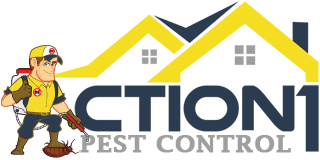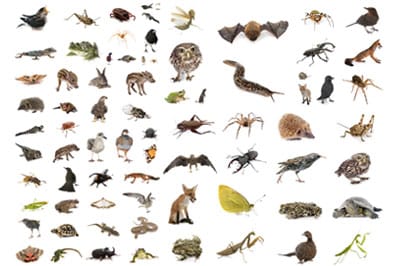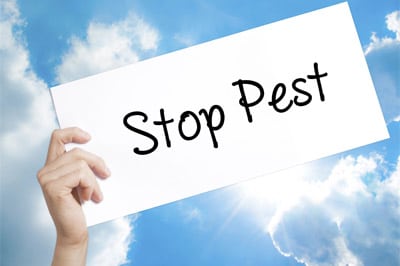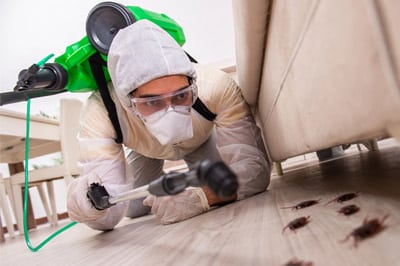Bird Control and Removal
Call Us Today- Home
- »
- Bird Control
Birds can transform from welcome visitors to serious problems when they congregate in large numbers around our homes and businesses. Effective bird control combines multiple strategies including physical barriers, deterrents, and habitat modification to humanely discourage unwanted bird populations while protecting property and health.
We face genuine challenges when pest birds damage our buildings, contaminate areas with droppings, and create health hazards through disease transmission. From pigeons roosting on commercial buildings to geese overwhelming park areas, these situations require targeted solutions that address the root causes of bird attraction.
Understanding which control methods work best for specific bird species and situations helps us make informed decisions about protecting your property. We’ll explore the science behind why birds become problematic, examine proven control techniques, and why you may need our services.
Highly Rated Bird Control Company

High Quality Services

Affordable & Upfront Pricing

Emergency Same Day Service
Understanding Bird Control and Its Importance
Bird control involves managing unwanted bird activity to prevent property damage, health hazards, and safety risks. We explore what constitutes effective bird management and why addressing bird infestations requires immediate attention.
What is Bird Control?
Bird control encompasses various deterrent methods and exclusion techniques designed to discourage birds from gathering in problematic areas. We define it as the strategic management of bird activity where their presence causes damage to buildings, threatens safety, or spreads disease.
Physical barriers represent the most effective approach. These include bird spikes for narrow surfaces like roof edges and parapet walls. Electric bird track systems work well on flat surfaces.
Bird netting covers larger areas effectively. We recommend this method for warehouses and agricultural facilities where birds cannot access protected spaces.
Behavioral deterrents target specific species based on their intelligence levels. Corvids like crows require sophisticated approaches due to their ability to detect and adapt to control methods. We must understand bird behavior patterns to implement successful long-term solutions.
The most successful strategies combine multiple deterrent types. This multi-sensory approach creates a comprehensive defense system that addresses different bird behaviors and preferences.
Why Bird Control Matters
Bird infestations create significant financial burdens for property owners and government budgets. We see thousands of pounds spent annually cleaning up damage from urban pest birds like pigeons, seagulls, and crows.
Property damage occurs through highly acidic bird droppings that erode building materials rapidly. These droppings strip paint from cars and window trim. Bird nests block drainage systems over time, potentially causing roof collapse.
Health risks include over 50 transmittable diseases carried in bird droppings. Some diseases become airborne, threatening anyone in the immediate area. Restaurants and food processing facilities face contamination risks that violate health regulations.
Safety hazards emerge from slippery droppings causing slip-and-fall accidents. Bird nests near electrical wires create fire hazards. We must address these liability issues to protect employees and customers.
Economic impact extends beyond cleanup costs. Properties with bird problems experience devaluation. Businesses may face regulatory fines or temporary closure for non-compliance with health and safety standards.
Common Bird Infestations
Pigeons represent the most widespread urban bird problem. They build nests in rain gutters and roof corners, often remaining undetected until significant damage occurs. These birds adapt quickly to urban environments and reproduce rapidly.
Starlings create similar nesting problems on roofs and building structures. Their nests contribute to drainage blockages and pose fire risks when located near electrical systems.
Seagulls cause problems in coastal areas and urban centers. They create mess through aggressive scavenging behavior and large-scale roosting. Their size and aggressive nature make them particularly challenging to deter.
Crows demonstrate high intelligence, making traditional deterrents less effective. They remember successful feeding locations and adapt to control measures quickly. We need specialized approaches for corvid management.
Agricultural areas face additional challenges from crop-damaging species. These birds can destroy entire gardens or agricultural yields in hours, requiring immediate intervention to prevent economic losses.
Our 5 Step Pest and Bird Control Process

Bird Control Methods and Solutions
Bird control involves using physical barriers to prevent roosting, visual and sound-based deterrents to discourage landing, and advanced laser systems that create exclusion zones. These methods range from permanent installations like spikes and netting to high-tech solutions that adapt to bird behavior patterns.
Physical Bird Deterrents
Physical barriers provide the most reliable long-term protection against pest birds. Bird spikes represent one of the most effective solutions, featuring rows of stainless steel or plastic pins that prevent birds from landing on ledges, signs, and rooflines.
Bird netting creates complete exclusion zones over larger areas. We install these systems over courtyards, loading docks, and agricultural spaces. The mesh size varies depending on target species, with smaller openings for sparrows and larger ones for pigeons.
Bird control products in this category also include:
- Shock strips that deliver mild electrical pulses
- Wire systems that create unstable landing surfaces
- Barrier gels that make surfaces sticky and uncomfortable
These physical deterrents work best in high bird pressure situations where other methods fail. Installation requires proper spacing and coverage to prevent birds from finding gaps.
Visual and Auditory Bird Deterrents
Visual deterrents use birds’ natural fear responses to create uncomfortable environments. Reflective tape, predator decoys, and inflatable balloons can provide temporary relief from bird problems.
Sound-based systems emit distress calls or predator sounds to trigger flight responses. These devices work best when combined with visual elements and require regular sound pattern changes to prevent habituation.
However, we must note that birds adapt quickly to static visual and auditory deterrents. Plastic owls and basic sound machines typically lose effectiveness within weeks as birds recognize they pose no real threat.
Motion-activated systems perform better than static ones. Devices that move or change patterns maintain their deterrent effect longer than fixed installations.
Advanced Laser Technologies
Laser bird deterrent systems project moving green light beams that birds perceive as physical threats. These automated systems scan programmed areas and activate when motion sensors detect bird activity.
We find laser systems particularly effective for large open spaces like airports, landfills, and agricultural facilities. The technology works during both day and night conditions, though it performs best in low-light environments.
Modern laser systems include GPS programming and weatherproof housings for continuous outdoor operation. They can cover areas up to several acres with precise beam control that avoids sensitive zones.
Installation costs are higher than traditional methods, but laser systems require minimal maintenance and provide consistent results without habituation issues that affect other bird control products.
Health Risks and Property Damage Caused by Birds
Bird infestations create serious health hazards through disease transmission and contaminated droppings, while simultaneously causing costly structural damage to buildings, vehicles, and equipment through their acidic waste and nesting behaviors.
Health Hazards from Birds
Bird droppings carry over 60 different diseases that pose significant risks to human health. The most dangerous include respiratory infections that can become airborne when dried droppings are disturbed.
Histoplasmosis develops when we inhale fungal spores from dried bird droppings. This respiratory disease causes severe lung infections and can be particularly dangerous for individuals with compromised immune systems.
Salmonellosis spreads through contaminated surfaces where birds have left droppings. This bacterial infection leads to severe food poisoning symptoms including fever, vomiting, and diarrhea.
Cryptococcosis is another fungal infection linked to bird waste. It initially causes flu-like symptoms but can progress to affect the nervous system in severe cases.
Birds also carry external parasites including mites, fleas, and ticks. These parasites readily transfer to humans and pets, causing skin irritation and potentially transmitting additional diseases.
Bird feathers and dander trigger allergic reactions in sensitive individuals. Accumulated droppings contribute to poor indoor air quality, making breathing difficult for people with asthma or respiratory conditions.
Structural and Operational Risks
Bird droppings contain uric acid with a pH level between 3.5 and 4. This highly acidic waste corrodes metal structures, roofing materials, and vehicle paint, leading to expensive repairs and replacements.
Nesting materials create multiple hazards for property owners. Birds build nests in gutters, vents, and chimneys, causing water drainage blockages that result in structural water damage and potential flooding.
Fire hazards increase significantly when birds nest near electrical components. Dry nesting materials made of straw, twigs, and dried droppings are highly flammable and can ignite near HVAC systems or light fixtures.
Industrial equipment suffers costly damage when birds roost on machinery. Their acidic droppings eat through protective coatings and metal components, requiring frequent maintenance and part replacements.
Accumulated bird droppings create slip hazards on walkways and building entrances. These slippery surfaces increase liability risks for businesses and property owners facing potential injury claims.
Choosing the Right Bird Control Products
Effective bird control requires matching specific products to your unique situation and bird species. The three main categories of bird control products—physical barriers, deterrent spikes, and electronic systems—each serve different purposes and environments.
Bird Netting Solutions
Bird netting creates a physical barrier that prevents birds from accessing specific areas. This method works effectively for gardens, fruit trees, buildings, and large open spaces like warehouses.
Mesh Size Selection
- 3/4 inch mesh: Blocks pigeons, crows, and larger birds
- 1/2 inch mesh: Prevents sparrows and medium-sized birds
- 1/4 inch mesh: Stops smaller birds but may trap insects
Installation Considerations
We recommend UV-resistant polyethylene or nylon materials for outdoor use. Proper tensioning prevents sagging and bird entanglement.
Best Applications
Bird net solutions work well for agricultural settings, building facades, and courtyards. They provide long-term protection with minimal maintenance once properly installed.
Selecting Bird Spikes
Bird spikes prevent birds from landing on ledges, signs, rooflines, and other flat surfaces. These devices work through physical deterrence rather than harm.
Spike Materials
- Stainless steel: Durable, weather-resistant, 10+ year lifespan
- Polycarbonate plastic: Cost-effective, UV-stable, 5-7 year lifespan
Coverage Requirements
Standard spikes cover 5-inch widths. Wider ledges need multiple rows or wider spike strips. We measure the exact surface width before ordering.
Installation Tips
Adhesive mounting works for most surfaces. Screws provide permanent attachment for high-wind areas. Clean surfaces thoroughly before application for maximum adhesion.
Electronic Devices and Repellents
Electronic bird control devices use sound, ultrasonic frequencies, or visual stimuli to deter birds from treated areas.
Sonic Deterrents
These devices broadcast distress calls or predator sounds. Coverage ranges from 1-6 acres depending on the model. Rotation of sounds prevents bird habituation.
Ultrasonic Repellers
High-frequency devices claim to repel birds through inaudible sound waves. Research shows limited effectiveness since birds hear similar frequency ranges as humans.
Laser Systems
Automated laser devices create moving light patterns that birds perceive as physical threats. These work best in low-light conditions and open areas.
Multi-Sensory Options
Advanced electronic bird control products combine visual, auditory, and motion elements for increased effectiveness across different bird species.

Why Hire Our Team
Specialized Knowledge and Equipment
Our technicians can accurately identify bird species and assess problem severity. We use specialized equipment not available to the general public, including industrial-grade netting, professional spike systems, and advanced sonic devices.
Safety and Health Protection
Bird droppings carry diseases harmful to humans and animals. Our technicians have proper training, protective equipment, and safety protocols to handle contaminated areas safely.
Legal Compliance
Wildlife protection laws regulate bird removal and management. Expert services understand local regulations and prevent legal issues that could arise from improper handling of protected species.
Cost-Effective Solutions
While initial costs may seem high, professional services prevent expensive property damage. We eliminate birds and nests before significant structural damage occurs, saving money long-term.
What to Expect from Our Bird Control Services
Initial Assessment and Inspection
Our services begin with thorough property inspections to identify bird types, nesting locations, and damage extent. Technicians assess entry points and determine the most effective control methods for your specific situation.
Customized Treatment Plans
We develop tailored solutions based on your property’s needs. Common methods include installing bird control netting over roosting areas, placing spikes on landing surfaces, and using sonic devices in large outdoor spaces.
Follow-up and Prevention
We provide ongoing monitoring and maintenance. We offer advice on preventing future infestations and may recommend annual inspections to catch problems early.





